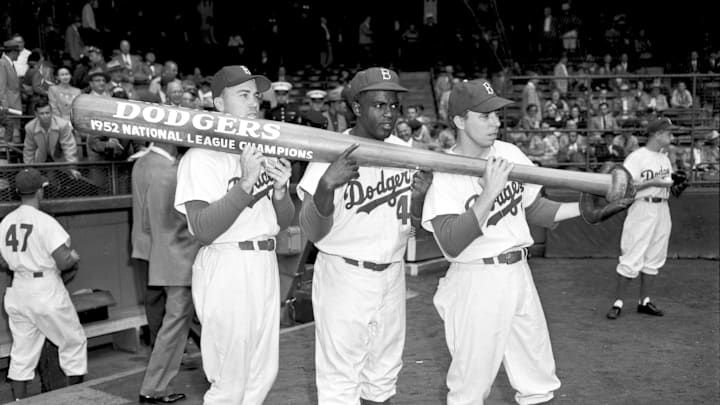The Los Angeles Dodgers have one of the better histories in Major League Baseball. Whether they were in Brooklyn or Southern California, it has been a franchise that rarely takes time off from competing. They weren’t always successful early on, but they have regularly produced some of the game’s best players.
With more than 100 years of rosters available, what would an all-time Dodgers starting lineup look like?
It’s hard. Several important players, even Hall of Famers, had to be left off. Many would make it onto the bench. It’s these starting nine who get their names on the lineup card.
Dodgers leadoff hitter is left fielder Zack Wheat
Leading off for the Dodgers in this all-time lineup is left fielder Zack Wheat. Depending on your age, he may be your grandfather’s grandmother’s favorite player. The Hall of Fame outfielder spent 18 seasons with the Dodgers from 1909-1926 and put together an amazing career.
Highlights include a .317/.267/.452 slash line with the Dodgers. His .335 batting average in 1918 was enough to win him the batting title. He’d actually have a few seasons later on in his career topping it. In 1923 and 1924, he hit .375 in consecutive seasons.
Some of Wheat’s numbers don’t quite measure up to other eras. He did see a slight uptick in home runs in the 1920s, but never got beyond the 16 long balls and 112 RBI he amassed in 1922.
Unfortunately, Wheat never did play for a championship Dodgers club. He was with them in 1916 and 1920 when they lost. In this lineup, he gets first ups in large part because of how well he hit. His 2,804 hits is more than any other player in a Dodgers uniform, and so are his 2,322 games. Who else should get to swing the stick first?
Unfortunately, this does mean Maury Wills didn’t make the club. He’d be the best leadoff hitter the Dodgers could have, but our infield couldn’t find room for him.
More Articles About Dodgers All-time Lists:
